Introduction
In the world of sports, custom jerseys are more than just uniforms; they embody team spirit, identity, and style. As the demand for unique and personalized designs grows, understanding the intricacies of creating these garments becomes essential. From selecting the right fabrics that enhance performance to mastering design software that brings visions to life, every detail matters.
This article takes a deep dive into the art of custom jersey design, guiding readers through the foundational elements, the importance of collaboration with suppliers, and the latest trends that shape this dynamic industry.
Whether for a local team or a promotional event, crafting a standout jersey is a journey that blends creativity with strategy, ensuring that each piece resonates with its intended audience.
Understanding the Basics of Custom Jersey Design
Creating a custom jersey design is an exciting journey that begins with grasping the fundamental components of the process. Here are some essential elements to consider:
- Fabric Selection: Opt for materials that prioritize comfort and performance.
For instance, fabrics featuring Dry-Excel™ Technology are excellent choices due to their moisture-wicking properties that dramatically enhance breathability, keeping athletes cool and dry. Durashell, a robust 100% polyester fabric, is particularly significant for hockey uniforms as it is exclusively used for hockey pant shells, providing not only durability but also a sleek appearance that meets the demands of the sport.
- Creation Software: Familiarize yourself with creation tools such as Adobe Illustrator or Canva.
These platforms are invaluable for bringing your custom jersey design vision to life, enabling you to visualize and refine your creation before production.
- Design Principles: Familiarize yourself with color theory, typography, and layout techniques that enhance the aesthetic appeal of your garment.
These principles are not just artistic; they play a pivotal role in conveying your brand or team identity, making your designs stand out.
- Customization Options: Delve into the myriad ways to personalize garments, from adding names and numbers to integrating logos and unique graphics.
For example, you can print your company logo prominently on the front, include a catchy slogan on the back, or even add custom artwork that reflects your brand's identity. Just like customized promotional items, custom jersey design serves as memorable giveaways that showcase your brand.
Comprehending the distribution channels—both online and offline—can improve your customization strategy and market reach, ensuring your creations resonate with your audience. As noted, online purchases are increasingly prevalent, which can influence how you approach your strategies for marketing.
- Current Trends: The merging of high fashion and sportswear is transforming the environment of personalized apparel for 2024.
Designers are now incorporating luxury elements into athletic wear, appealing to a broader audience that values both style and performance. This trend not only mirrors contemporary lifestyle impacts but also boosts the overall attractiveness of personalized uniforms.
By mastering these foundational elements, you will be well-prepared to make informed creative choices that resonate with your target audience and reflect the latest trends in custom jersey design for 2024. Additionally, remember that these custom garments can serve as effective promotional items, creating a lasting impression and enhancing brand visibility during events or giveaways.
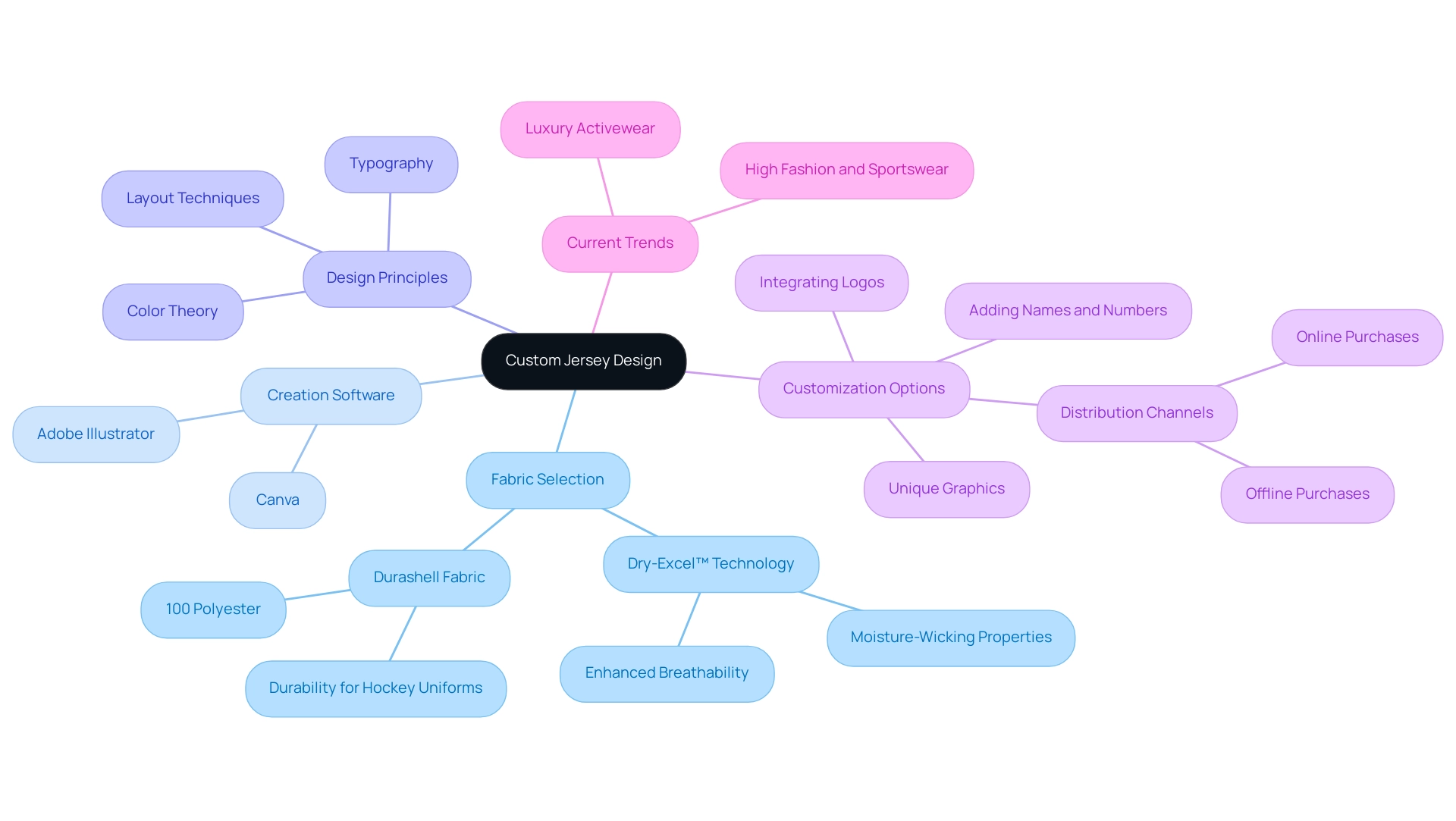
From Concept to Creation: Collaborating with Suppliers and Finalizing Designs
Transforming your custom jersey design from a mere concept into a stunning reality requires a thoughtful approach. Here’s how to navigate this creative journey:
-
Communication: Begin by clearly articulating your vision for the project to suppliers.
Utilize sketches, color samples, and detailed descriptions to minimize misunderstandings and ensure everyone is on the same page. As highlighted in recent developments, effective communication is crucial in reducing the average communication time between designers and suppliers, fostering a smoother workflow. -
Collaboration: Forge a strong partnership with your suppliers.
Discuss critical elements such as materials, production timelines, and costs. Strong relationships not only enhance creativity but can also lead to better pricing negotiations, making your project more efficient and cost-effective. Internal communicators play a vital role in ensuring this collaboration is seamless, as they facilitate effective communication within teams and with external partners. -
Digital Creation: The process begins with creating a digital visual using graphic design software.
Whether it’s a logo, artwork, or any graphic intended for print, ensure it’s optimized for the specific substrate and print requirements. This foundational step in the custom jersey design process is crucial for the success of your project, as it sets the tone for the entire production process.
Key steps in this phase include selecting the right color palette, ensuring high-resolution graphics, and preparing files in the appropriate formats. -
Prototyping: Don’t skip the step of requesting samples or prototypes.
This enables you to assess the quality and suitability of your creation before mass production starts. Prototyping is essential for making any necessary adjustments and ensuring the final product meets your standards. According to statistics, effective prototyping in custom jersey design can significantly reduce the likelihood of costly production errors. -
Finishing Processes: Once the layout is finalized, consider the finishing processes that enhance the quality of the printed items.
This includes applying protective coatings to ensure durability, cutting and trimming the fabric accurately, and assembling the components to create the final product. Understanding these processes is vital for achieving a polished and professional look. -
Finalization: Once you’re happy with the prototype, it’s time to finalize your order.
Confirm all specifications and quantities, and ensure every detail is documented to prevent any production errors. Engaging in a feedback loop with your suppliers during this stage can help solidify trust, which is critical as approximately 1 in 3 consumers report trusting most of the brands they use, highlighting the importance of building trust across diverse demographics. -
Feedback Loop: After obtaining your uniforms, interact with group members or intended clients to collect their opinions.
This feedback is invaluable—it can guide future creations and help you make enhancements that resonate with your audience. As mentioned in a recent quote, 'the future of workplace communication is defined by intelligent automation and personalized experiences,' highlighting the necessity for continuous dialogue and flexibility in your creative process.
By promoting effective communication and collaboration with your suppliers, along with a clear vision and a strong digital foundation, you’ll not only meet expectations but likely surpass them—creating a custom jersey design that truly reflects your group's spirit and identity.
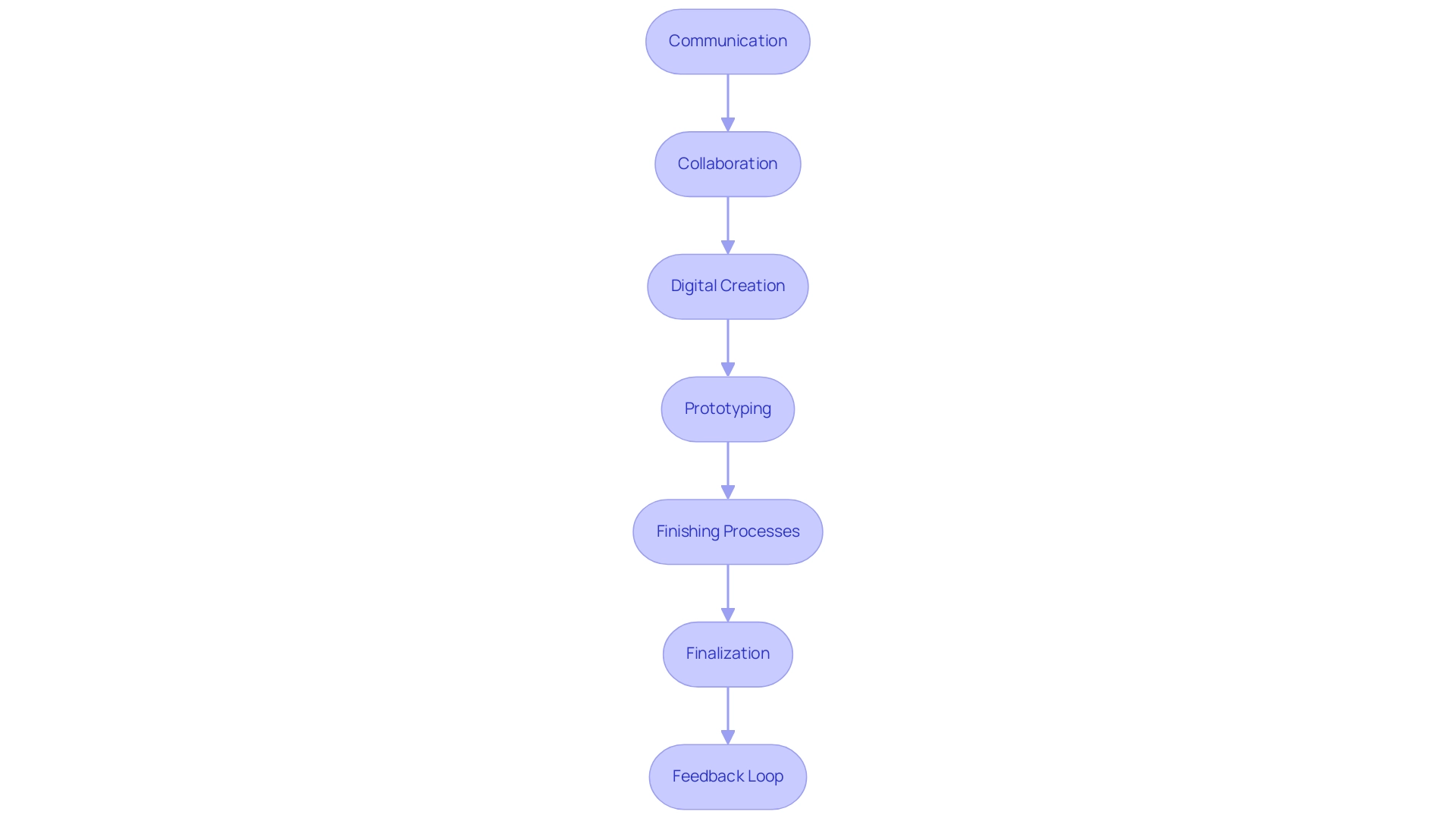
Choosing the Right Design Elements
Choosing the right style elements can transform your custom jersey design from ordinary to extraordinary. Here are some key considerations to keep in mind:
- Color Palette: Start by choosing colors that resonate with your brand identity or team spirit.
A nature-inspired palette featuring teal and rust orange, as expert Abbie Warnock-Matthews notes, evokes a sense of aquatic and winter sports while offering a refreshing alternative for sports branding. This color scheme not only captivates attention but also aligns with current trends in sports jersey styling. Additionally, incorporating digital purple and electronic blue can create a dynamic blend of oriental style and technology, appealing to a modern audience.
Applying color theory can assist you in achieving harmony and contrast, ensuring your creation captures attention.
- Typography: The choice of fonts is crucial. Choose styles that are both legible and harmonious with your theme.
Mixing fonts for names and numbers can add a dynamic flair while remaining coherent. In 2024, popular typography styles lean towards bold, sans-serif fonts that enhance visibility and modernity. Quotes from industry experts emphasize the significance of typography choices in conveying a brand's personality.
-
Graphics and Logos: Incorporate high-resolution logos or graphics that epitomize your brand or team. These elements should complement your overall layout without overwhelming it, striking a balance that enhances visual appeal. As the apparel industry shifts towards functional textiles driven by consumer demand for comfort and performance, selecting the right materials is equally important in garment design.
-
Placement: Thoughtful positioning of each element is essential. Aim for balance and avoid overcrowding any single area. Consider how your creation appears from various angles to ensure it resonates well in all contexts.
By carefully selecting these components and integrating current trends in color and typography, you can craft a jersey that stands out and truly connects with your audience, ultimately reflecting the evolving landscape of sports apparel creation.
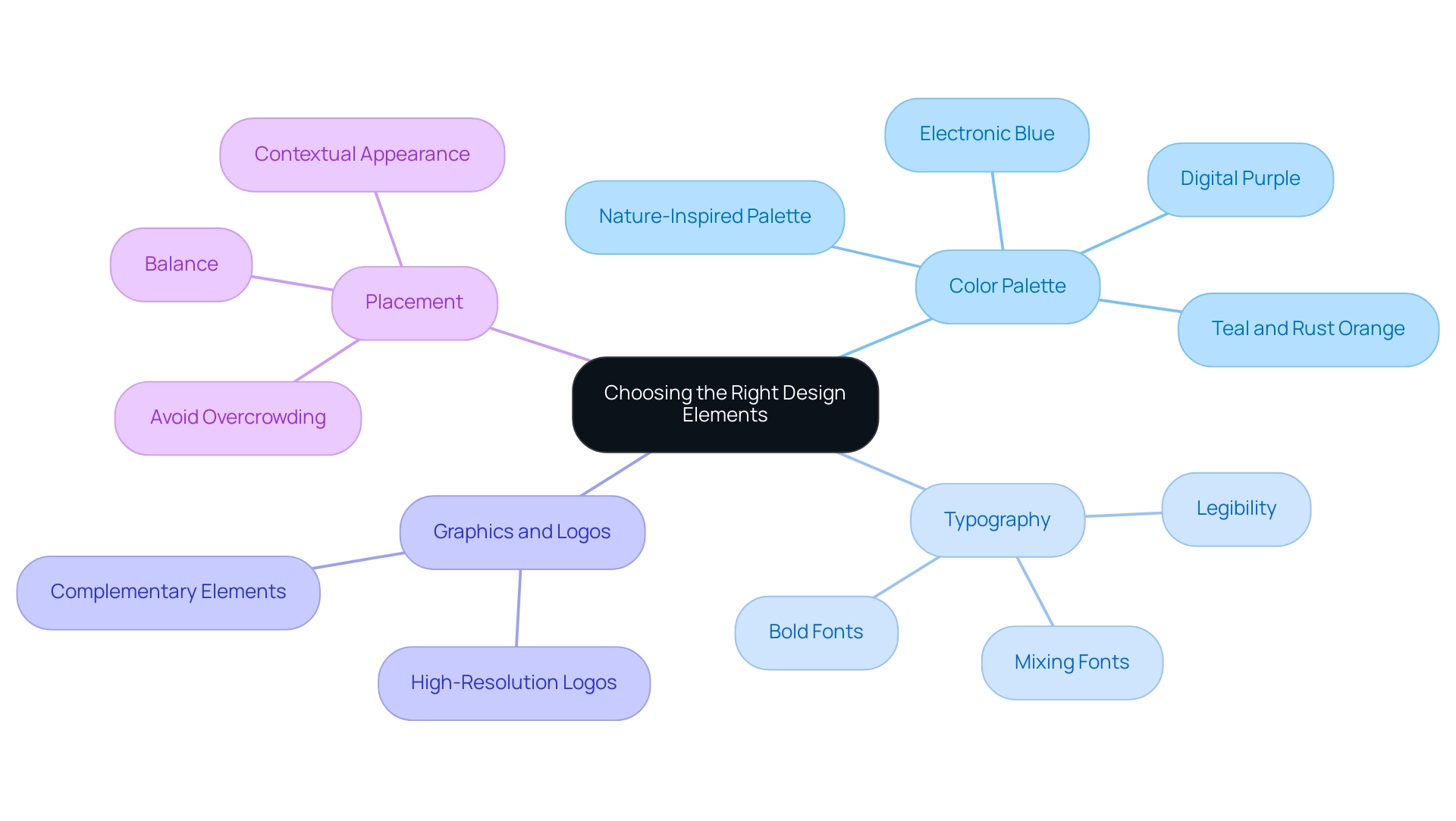
Incorporating Feedback and Iterating Designs
Feedback is an invaluable component of the creation process, and knowing how to harness it can significantly elevate your custom jersey design projects. Here’s how to effectively incorporate feedback:
-
Gathering Feedback: Once you’ve created your initial concepts, present them to a focus group or team members.
Be specific in your inquiries to elicit constructive feedback. For instance, ask about color choices, logo placements, and overall aesthetic appeal. -
Evaluating Input: Dive into the feedback to identify recurring themes or suggestions.
Understanding which elements resonate and which require adjustments is crucial. Remember, it takes less than 500 milliseconds for someone to form a first impression, so make those initial reactions count. Moreover, research shows that for every $1 invested in user experience (UX), there is a return of $100, equating to a 9,900% return, underscoring the financial benefits of incorporating feedback effectively. -
Iterating Designs: Utilize the insights gained to make informed changes.
This could mean fine-tuning the color palette, repositioning logos, or reimagining specific elements of the layout. The average number of iterations for custom apparel often hovers around three to five, emphasizing the importance of refinement.
A collaborative approach to creation is essential, as indicated by a survey revealing that 16% of respondents believe user experience is a shared responsibility across teams. -
Testing Again: If possible, create a second version of the garment and present it once more for feedback.
This iterative process not only improves the creation but also ensures it resonates with your audience’s preferences.
As a testament to the significance of UX, consider that WordPress is ranked at 14.7% of the world’s top websites, highlighting how effective aesthetics can lead to widespread success.
By embracing feedback and iterating on your creations, you can craft a custom jersey design that truly reflects the desires and needs of your audience, ultimately leading to a more successful and engaging product.
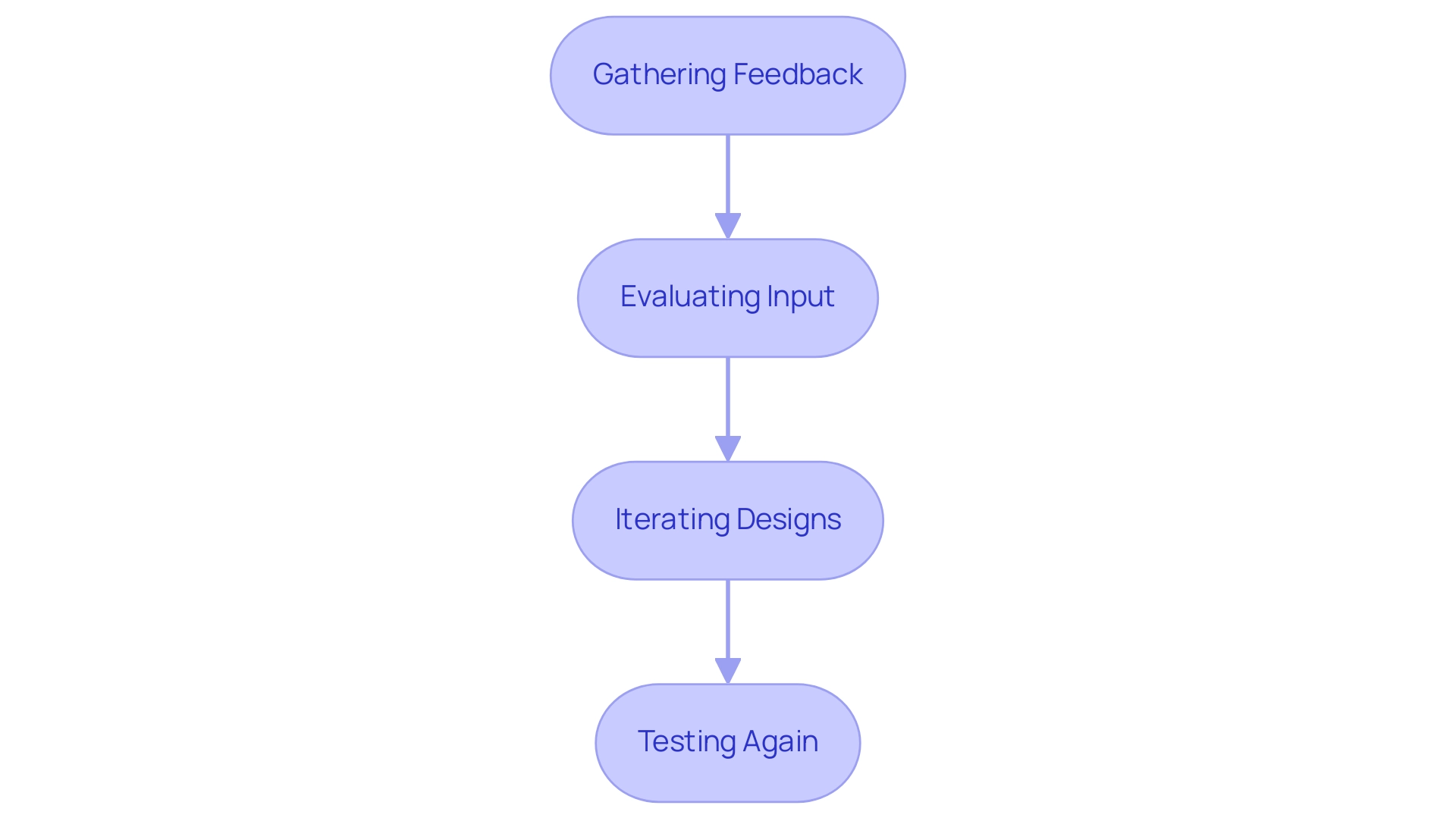
Finalizing Your Custom Jersey Order
Once you're thrilled with your creation and have gathered valuable feedback, it’s time to bring your custom jersey order to life. Here’s a straightforward guide to ensure everything goes off without a hitch:
-
Confirm Design Specifications: Take a moment to double-check all design elements—colors, fonts, and graphics—to ensure they match your vision perfectly.
Accuracy here can prevent costly errors down the road. -
Review Quantity and Sizes: Pay extra attention to the order’s quantity and sizes. This is crucial since sizing issues are a leading cause of returns, particularly in children's clothing, where 31% of returns stem from items being too small.
The complexity of sizing can lead to reliance on potentially inaccurate self-measurements, making it essential to accommodate any special requests for specific members or events. Be sure to double-check player information with another colleague to avoid errors. -
Negotiate Pricing: Don't hesitate to discuss pricing options with your supplier, especially if you're placing a bulk order.
This negotiation is key; many find that it can lead to significant savings. As Keener Jerseys wisely observes,Here at Keener Jerseys, we provide various materials for name bars, so there are options for every group and their unique styles.
Finding the right materials can also influence your budget.
Additionally, name bars are matched to NHL organization fonts, with the default font being the Edmonton Oilers font, and come in 3” height for adults and 2.5” height for youth. -
Place the Order: After confirming all details, proceed to place your order with the supplier.
Request a written confirmation to avoid misunderstandings—this protects you and clarifies expectations. -
Follow Up: Keep the lines of communication open with your supplier.
Regular check-ins will keep you informed about production timelines and any potential hiccups along the way.
By diligently following these steps, you’ll ensure a seamless transition from custom jersey design to production, resulting in high-quality custom jerseys that truly reflect your team's spirit.
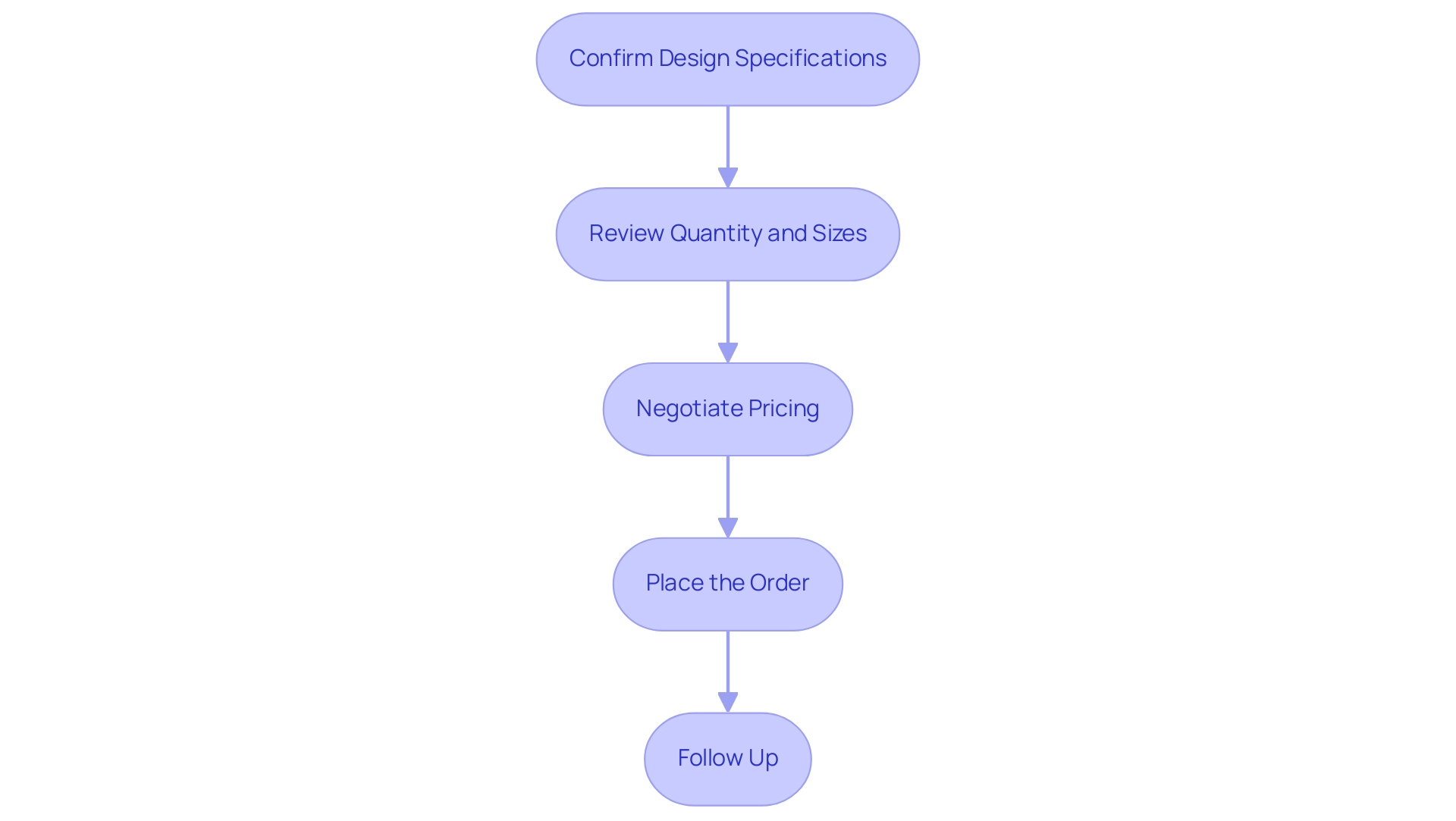
Conclusion
Creating custom jerseys is an intricate process that combines creativity, strategy, and collaboration. By understanding the fundamental components—from fabric selection and design software to the significance of color palettes and typography—designers can craft jerseys that not only meet athletic needs but also resonate with team spirit and brand identity. Emphasizing current trends, such as the fusion of high fashion and sportswear, further enhances the appeal of these garments in today’s market.
The journey from concept to creation hinges on effective communication and collaboration with suppliers. By articulating a clear vision and fostering strong relationships, designers can navigate the production process more smoothly. Prototyping and iterative feedback play crucial roles, allowing for adjustments that refine the final product and ensure it aligns with audience expectations.
Ultimately, the meticulous attention to detail in selecting design elements, incorporating feedback, and finalizing specifications culminates in the creation of standout custom jerseys. These pieces serve not only as uniforms but as powerful extensions of team identity and promotional tools. As the demand for unique designs continues to grow, embracing these principles will elevate the quality and impact of custom jersey designs, making them unforgettable in the world of sports.




